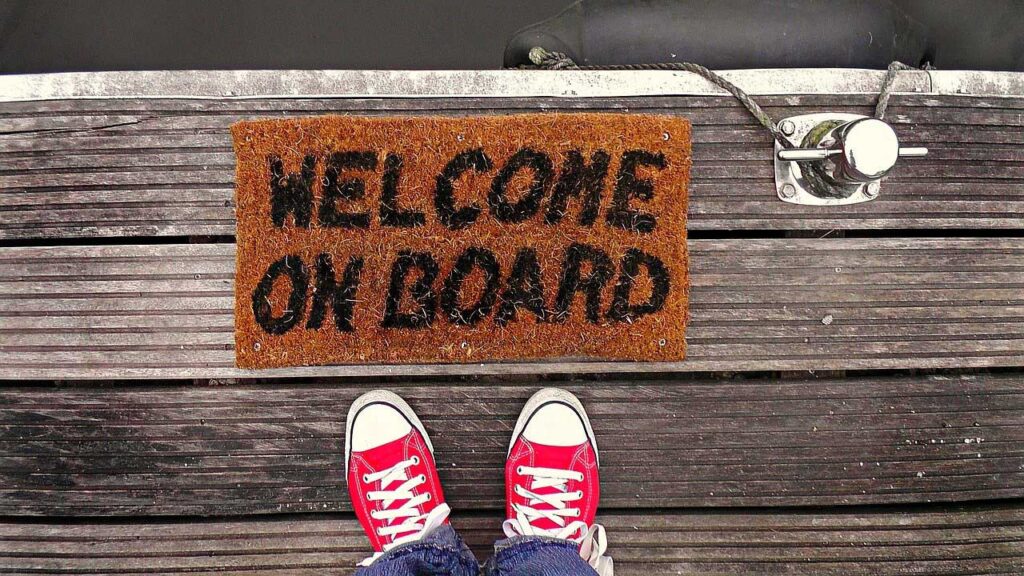If you are looking for a quick guide on how to hire the best people, you are in the right place. Of course, if you are really looking to hire the best people you will need to do many things – and reading this guide can’t be the only thing you have to do. Yet, it’s certainly a start, so let’s dive into it.
How to Hire the Best People: Planning
1. What is your goal?
If you want to hire the best people, it is probably because you need them to do something. You need to understand that as the very first thing. This is important because there is no absolute definition of best, that is, the best people at doing something won’t be the best ones to do something else.
So, start by asking what is your goal and work backward. What is the thing that the people you want to hire need to achieve? How will they go about achieving that? What tasks do they need to perform to reach that goal?
Here, it is helpful to start with a written definition of your goals, as it will force your clarity in your thought. Don’t be too verbose anyway, just write a few sentences in a short paragraph that express clearly what is the goal, read it and tweak it until you are satisfied.

Once you have a definition of your goal, you can move to the next step. For example, below you find a potential definition of the goal settings you may use if you wish to hire the best. Of course, your goals will be different.
The goal for this position is to lead a team of Web Developers and ensure they are accountable, proactive in solving customer issues, and that they always have a consistent high quality in their work.
Now that you know what your expectations are, you can start to think about what would fulfill them.
2. What do you need in the person you are hiring?
We can continue this guide on “how to hire the best people” by defining what we need from such people. Since we have crystallized our goals in a document, we can start to work from that to understand the kind of people that would be able to achieve those goals.
How can we do that? We need to define what the person we are looking for is like, and what can she do. This is how we hire the best people. To simplify this task, we can think in terms of three areas: personality traits, soft skills, and hard skills.
- Personality Traits – those are inner qualities of a person, they “come from within”. They identify what a person is like, and rarely change over time (and, if they do, they do extremely slowly). Examples of personality traits can be: being extroverted, detail oriented, relentless, soft-spoken, conciliatory, harsh, reflexive, and so on.
- Soft Skills – skills are things you can do. Soft skills in particular are things that you can do that are hard to teach and are generally gained with experience. These are things like public speaking, influencing others, leadership. It is often hard to quantify, and it is often impossible to achieve the skill just by studying.
- Hard Skills – like soft skills, those are things you can do. However, these can be trained and learned, and tend to be specific to the job, industry, or role. Here you find being able to code in a programming language rather than another, using Microsoft Excel, preparing financial reports, and so on.
For any position you are hiring for, you need a combination of personality traits, soft skills, and hard skills. How to hire the best people, considering this? It is simple, you have to list all the personality traits that are important to you, all the soft skills, and all the hard skills that are necessary. Divide each into two camps: “core”, those that are strictly needed for the role, and “optional”, those that are nice to have.
If you struggle in this step don’t worry, the next part of this guide on how to hire the best people is about the Job Description, and this will help sort things out.
3. Job Description
One important tool to hire the best people is the job description. The job description is simply that: a description of the job. It is a document, typically one to three pages, describing the job. It explains what the role is, what are the activities it must perform (both core activities and optional activities), what is the level of experience required and what are the skills required.

If you struggle to identify personality traits, soft skills, and hard skills for a job, start with the job description instead. Start to list what are the activities this position has to do, what are important and essential for the job, and what are additional. Once you have this in front of your eyes you can start to think about the traits and skills that are needed.
Even as you do so, remember to not lose sight of the ultimate goal, the high-level objective of the position. For example, maybe you have a growing team and you are hiring an individual contributor to this team right now. However, you expect this team to grow large enough that it will need a team leader in the near term, so you may want to look for leadership as a trait. You may not need this quality right now, but it is important that you keep things in perspective and consider it, as you will need it for your higher goals.
Once you have the job description written and the required traits and skills clarified, you can define the economics.
4. Compensation Structure
Compensation is an important part of any job and should never be left as an afterthought. Instead, you should plan for the compensation when you write the job description. This is not only about pay, but also about the different components of pay. If you want to know how to hire the best people, compensation is one of the items you can’t overlook.
Any compensation structure is made up of four items:
- Base Salary – this is the salary you get no matter what just by showing up at work. If this component is predominant, the company is signaling they value economic security and tenure, and they cater to this kind of employee.
- Short-Term Incentives – those are commissions, sales bonuses, productivity bonuses and the like, linked to specific short-term objectives such as contracts sold or items produced. The more you leverage this component, the more you are shifting risk toward the employee (as some part of the pay is not “granted”). This approach tends to reward people who work hard and deliver results.
- Long-Term Incentives – these are stock options and restricted stocks, giving a “piece” of the company to the employee if they stick for enough time. They tend to promote ownership of the overall business results and let people have an interest in the overall company succeeding. They are popular in startups, to attract people who really believe in the business.
- Non-Monetary Benefits – those are all the other benefits a company may give to the employee, such as a company car, free meals, free healthcare and so on. If used in the right way, they are a great option to attract the right kind of people, hence hire the best. We have a guide on how to use non-monetary benefits here.
Start by considering how much you are willing to spend overall, then find the correct compensation structure by combining those four items in a way that reach your spending target while also fulfilling your goal of hiring and attracting the best people.
In general, compensation structure should be defined per role, not per person. Everyone in the same role should have the same compensation structure and pay range, but individual pay may be negotiable within this range. However, there are also some new-age approaches that state pay is not negotiable and everyone in the same role gets the same pay (which tends to be slightly generous for the role). This can also be an approach that you want to follow if you need to highlight “hassle-free” employment.
How to Hire the Best People: Interviewing
Now that you have defined what you want, you need to go out there and get it. That is, you need to post your job opening and interview candidates. In this section of the How to Hire the Best People guide, we will talk about this specifically.
5. Posting the Job Opening
This is the easy part, and it is as easy as copy-and-pasting the job description into some job search platforms. You may want to tweak it though, adding some information about the company in general, the team, and other general details that might interest a candidate.
You don’t need to post the opening on as many websites as possible, but only the ones that matter. This depends on the position you are looking for. In general, if you are looking for any type of office or technology work, LinkedIn can be your only place. If you have an opening for a job that is more operational, such as in a factory floor, you may want to use other platforms such as Monster. Those tend to vary country-by-country, so it would be pointless to list them all here.
6. Screening Candidates
Hopefully, if your job opening is attractive enough, you will start to receive some requests from candidates. You may also do some outreach, asking some people to apply. In any case, once applications start to come in, if you want to hire the best people you need to know how to screen them.
Most likely, you will receive more applications than you can possibly move through the interview process start-to-finish. So, if a candidate is not a good match, you want to know this as early as possible.
A good step to this is a phone screen. This is a phone call where the company, typically through a recruiter, calls the people who applied that seem to have a relevant resume or application in general. This calls typically last 10 to 45 minutes, depending how deep you want to go in this stage.

The goals of the phone screen are mainly two: confirming the candidate have the right potential, and ensuring the candidate understands well the position he is applying for. This is done by asking more details about the work experience or education, and asking to relate it to the job opening. You may also want to ask things such as “why do you want to work here?” or “why did you apply?” if you are interested in candidate who do their homework and try to know the company before they apply.
One important tool to use during the phone screen are screening questions. The idea is that sometimes you can’t assess skills and attitude in advance, so you want to make some questions and statements that allow candidates to self-select themselves out if they feel they are not a match. For example, if the position requires frequent travel, a screening question may be “how would you feel going abroad once per month?”. You will have some people who are enthusiasts, some that won’t be as happy and won’t like a job like that. In this way, at least the ones who are big mismatches opt out from the process on their own.
As a rule, never tell the result of the screen on the phone. Take your time to reflect on it and inform the candidate later. However, if you tell them that you will let them know, do let them know. A good approach to evaluate the screening is to take notes as you do it, so that you can go back to them later.
7. Interviewing Candidates
When people think about how to hire the best people, they often think about the interview process. The interview is a crucial step, but as you can see it is step #7, there are 6 preliminary steps you need to do in advance! In any case, once you do get to the interview, this is what you should do.
Come prepared in advance. You should have a set of questions, and ask similar questions to all candidates so that you can benchmark them with one another. You can do that with a Behaviorally Anchored Rating Score, or BARS. This means listing possible types of answer to each question and assigning a rating to each. Then, whenever you evaluate a candidate, you check their answer against the BARS and give him the appropriate score. In this way, you have a tool to compare candidates also numerically.
This may sound complex, but it is not. Imagine a broad question such as “how many tennis balls can fit into a Boeing 747?”. Here, you may want to provide the following BARS:
- Defined assumptions, problem broken down into smaller steps, done some sanity (8 points) checks after computing the result, provided a confidence interval for each measure (6 points)
- Defined assumptions, problem broken down into smaller steps (4 points)
- Problem broken down into smaller steps (3 points)
- Just tried to guess the number (1 point)
- Unable to solve the problem (0 points)
Then, you just listen to the answer and see what value on the BARS scale fit. Let’s say someone just answers “1 million, more or less”. You know he just tried to guess the number, so he deserves 1 point. BARS by themselves are often not enough. Written feedback is also important, to capture things that are not easily shown with the metrics. We will get to this in a second.

Now that you know how to pose a question, you need to know which questions to ask. Once again, this depends on your goal. In general, you need to use questions to assess personality traits, soft skills, and hard skills.
To assess personality traits, you should ask behavioral questions. These are things like “tell me about a time when…”, and then describe a situation where the trait you are looking for should come to the surface. For example, if you are looking for determination and ownership beyond one’s own responsibilities, you may ask “tell me about a time when you went beyond what your role required”.
To assess soft skills, you should also ask behavioral questions, or have the candidate do some sort of assignment. For example, if written communication is an important skill, ask her to produce a short essay. If you are hiring someone to be a salesperson, ask her to sell you something (please, not “sell me this pen”, but rather a real product that makes sense to the role).
To assess hard skills, you need to ask technical questions much like a test in school. Here, the goal is to probe going as deep as possible into some of the hard skills to see if the candidate has been genuine in the resume and the declared skills can be trusted. Since you won’t have time to test all the skills, it is best to pick 2-4 and go as deep as possible in each. Most of the candidates tend to be honest in their resume, but they inflate their skills unconsciously – so this is an important part to do.
In addition to these types of questions, there are questions better not to be asked. You should avoid open-ended questions such as “tell me about yourself”. This is because you don’t know what the candidate is going to say, and he may say something that bias you, either positive or negative. For example, he may say “I really like hiking”, and you do like hiking as well so you start on a positive note, that is completely irrelevant for the job. Even questions before the interview starts such as “how are you?” or “how was the weekend?” are best to be avoided for the same reason.
Another important tool to avoid bias is to have multiple people interview the same candidate. If you have only one interviewer, the success of the interview depends on the candidate as well as the interviewer. If you have more than one, the key differentiator becomes the performance of the candidate – not the judgement of the interviewers.
Since you have multiple interviewers, it is important that they all provide some written feedback so that they can later meet and discuss the candidate, deciding he will be hired or not. This is the process used in companies such as Amazon and Microsoft, while others such as Google have other people (who did not participate in the interview) make the hiring decision based on the document, to remove as much bias as possible. I think this can introduce different types of biases, so personally I prefer Amazon’s or Microsoft’s method – but pick the one that most resonates with you.
8. Making an Offer
If you decide on what to do with a candidate, you should let her know. If the feedback is positive, you may want to get in touch with the candidate to propose her an offer. This is the place where you should start to negotiate compensation.
At this point, the candidate is already a good fit, we are only trying to determine if there is economic feasibility for the hire. Of course, you want to do this after everything else because you pay fairly and slightly above average at least, so that you know pay won’t be a main concern. If you are trying to underpay people, you may want to start this discussion earlier in the process so that people don’t turn away at the last stage, avoiding everyone’s waste of time.
This process is mainly done by the clerical staff, addressing some bureaucracy, filling and signing documents, and so on. Some companies also like to make their offer letters contingent upon a background check for criminal offenses – you have to evaluate if that is best done for your company or not.
This process concludes with the offer being signed by the candidate and a starting date agreed. But the hiring does not stop here, if you want to really know how to hire the best people, keep reading.
How to Hire the Best People: Onboarding
9. Before Day One
Day one is the first day the new employee shows up at the office. It is what you agreed in the offer, and it is an important day both for the employee and the company. However, the onboarding process starts before that, and you need to know about it if you are committed to learn how to hire the best people.
Onboarding is the process of “bringing the new employee onboard”, aligning him on company values, culture, and generally getting him up to speed in the work he has to do. It starts as soon as you have the signed offer, so that you can be ready for day one.
Before day one, prepare everything you need to have at hand for the day one. If the employee needs a computer, this must be setup before the day one and have it ready on that day. Same goes with phone, software licenses, accounts, company car, and everything else the guy may need to do the work.
In addition to preparing the tools, you also want to prepare the new employee. Send him an email and give him a call to inform him about where to go, how to get there, where to park, who will meet him in the reception, and what is the plan for the first day. Will they have a lunch out with the team? Will the CEO come meet him? Will they have a session with HR? Whatever it is, set clear expectations. Then, you have to stick with them!
10. Day One
How to hire and hire well: mind day one! This is the first day of your new employee, and it is when he will start to have an idea about what your company is like. First impressions are important, even if we don’t like to admit it, they play a key role unconsciously, so be prepared to give the impression you want to give.

Most importantly, follow the expectations you set before day one. Ideally, have the new employee meet with key people, such as their team, and possibly senior management. Have him tour the company office and meet with the various departments, deliver him the tools he needs for the job and outline what will happen in the first week. This might be meeting with various people and maybe getting assigned a first project.
If you have a project that is small, self-contained and do not require much knowledge of the context, that is a great project to give to a new employee. It will help him feel productive and useful, so keep this in mind and mention it on the first day, but do not give it to him on day one. Day one should generally be about orientation.
11. After Day One
Onboarding continues after day one. For some it may be the first week, the first quarter, the first year – truth is, it is forever. You are always becoming more and more part of your company’s culture, and at some point, starting to shape it.
Ensure that there are frequent performance reviews when the employee can sit with his manager and discuss performance, expectations, and objectives. Some companies also like the idea to give each new hire a “buddy”, a “peer” of the new employee that has more tenure in the company and can help him understand culture and get things done.
There is no clear recipe, and onboarding can take a large article all of its own (if not books), but the goal is to ensure the employee has always something to do, does not feel alone, and knows who to contact for what.
How to Hire the Best in a Nutshell
Congratulations, if you wanted to hire the best people here you know it all. In short, this is what you will have to do:
- Define your high-level business objectives
- Define the tasks and skills the person you hire for will have to do to meet such objectives
- Create a job description accordingly
- Attach a compensation structure to the job description
- Post the job description on job search websites
- Screen candidates on the phone to ensure they got the position and have the right qualifications
- Interview candidates, look for traits, soft skills, and hard skills. Have multiple interviewers to avoid bias
- Propose an offer to the candidate you like
- Prepare all the tools needed so that the new employee can start working on day one
- Have him meet key people on day one
- Keep regular updates and ensure he has something to do
This article should tell you how to hire the best people in a comprehensive way. If you are a non-HR manager, this might be the only article you ever need to read. Nonetheless, we have more. Particularly, we suggest you continue with:
Hopefully this will ensure you get the best people for your company. Good luck!